Q&A: How IQVIA Keeps Pharmacists Engaged with US Prescription Drug Use
Michael Kleinrock from IQVIA joined Drug Topics to discuss his company’s recently released report, Understanding the Use of Medicines in the US 2025.
The Understanding the Use of Medicines in the US 2025 report is designed annually to provide the appropriate stakeholders within pharmacy trends in drug spending, but more specifically drug use, from the previous year.
“With over 330 million people, with an aging population, with a pandemic in the last 5 years, with a number of new medicines, and shifts in available treatment modalities,” Michael Kleinrock, Lead Director of Research at IQVIA, told Drug Topics. “What's changing? What's the same? What are the trends? Keeping that macro perspective, that overview, on a market this complex really helps you then dive into specific topics you're interested in.”
From benefit design to patients’ out-of-pocket costs, the report, conducted by IQVIA, serves as a way for updating pharmacy employees, patients, plans, and more on the ongoing trends in drug use and where those trends may be headed in the future.
Drug Topics caught up with Kleinrock to get his perspectives on the report and understand what these drug use trends mean for pharmacists and their patients.
“Dynamics that have become apparent during 2024 have driven significant revisions to the outlook, and in this report, the drivers of change in medicine spending over the next 5 years are deconstructed to enable better understanding,” wrote IQVIA. “This examination includes the impact of novel obesity and diabetes medicines which have been significant drivers of growth, and the uptake of other novel medicines expanding into new patient populations and becoming established as backbone therapies.”
READ MORE:
Drug Topics: What is the importance of the annual Understanding the Use of Medicines in the US report from IQVIA?
Michael Kleinrock: Well, this is something we've been doing every year, so thanks for having us. I think we find our audience grows and evolves every year. But we produce this report every year because the use of medicines in the US is not otherwise centrally reported. We're providing appropriate and helpful context from a whole range of stakeholder perspectives. For example, we title the report “The Use of Medicines,” because we're focused on what happens, not necessarily purely financial aspects of it, which is often a topic of other reporting.
When we're looking at what pharmacists or others might be interested in, we are really wondering, for example, with over 330 million people, with an aging population, with a pandemic in the last 5 years, with a number of new medicines and shifts in available treatment modalities. What's changing? What's the same? What are the trends? Keeping that macro perspective, that overview, on a market this complex really helps you then dive into specific topics you're interested in. To have some context and our continuity with having done this now, since 2011, we've been publishing this report. There's a long history of putting out a lot of the same things looked at it in the same way; really helps people see what's changing and what's staying the same.
Drug Topics: What disease states are medicines being spent on the most right now, and where are those trends headed?
Michael Kleinrock: Really, the leading therapy area for spending is oncology. That trend is in the low-to-mid teens in terms of growth rate. Currently it’s going to be slowing to upper single digits through the forecast period, basically because 2 of the leading drugs, there's immune checkpoint inhibitors—nivolumab is the molecule—and pembrolizumab is Keytruda, 2 of those are going off patent in 2028 and 2029. Those are backbone therapies across a whole range of solid tumors and becoming first line therapies. The impact of those medicines having lower cost options will be pretty significant.
Slowing the growth, but at the same time, we still see a continued flow of novel cancer drugs across a range of tumors: new biomarkers; new approaches; new specificity for individuals; new technology; bispecific antibodies, not just one antibody target but 2; tri-specifics; antibody drug conjugates with a chemotherapy payload linked to an antibody; cell and gene therapies; these car-T, very personalized medicines increasingly available. Often those very high-end medicines are for very few people. Driving spending is often very few people.
If we're thinking about immunology, there's a slightly larger group of patients across a range of diseases, and we're seeing new diseases open up as immunology treatments. There are more and more people who are benefiting. Additionally, for many many years, if you had one of these autoimmune diseases, you might get a symptom management medicine rather than a disease modifying agent. As we see more and more medicines in those categories, you're going to start to see more and more people treated. We see volume growing at 8%-10%, so it's not just dollars growing at these high levels, it's volume and treated and adherent patients.
But we also see rare disease. There [were] up to 48 novel drugs launched in the US in 2024; 31 of them were orphan drugs. These are increasingly new treatment options for patients who might have no others. There's a lot going on there. The orphans don't necessarily drive overall spending as much. Although, there are large numbers of them, and a lot of that has to do because, essentially, their prices are high but high price generally correlates with low volume. And, obesity is going to have an impact [as well].
READ MORE:
Don’t get left behind: Sign up today for our
Reference
Understanding the use of medicines in the U.S. 2025. IQVIA. 2025. Accessed July 14, 2025. https://www.iqvia.com/insights/the-iqvia-institute/reports-and-publications/reports/understanding-the-use-of-medicines-in-the-us-2025
Newsletter
Pharmacy practice is always changing. Stay ahead of the curve with the Drug Topics newsletter and get the latest drug information, industry trends, and patient care tips.






































































































































